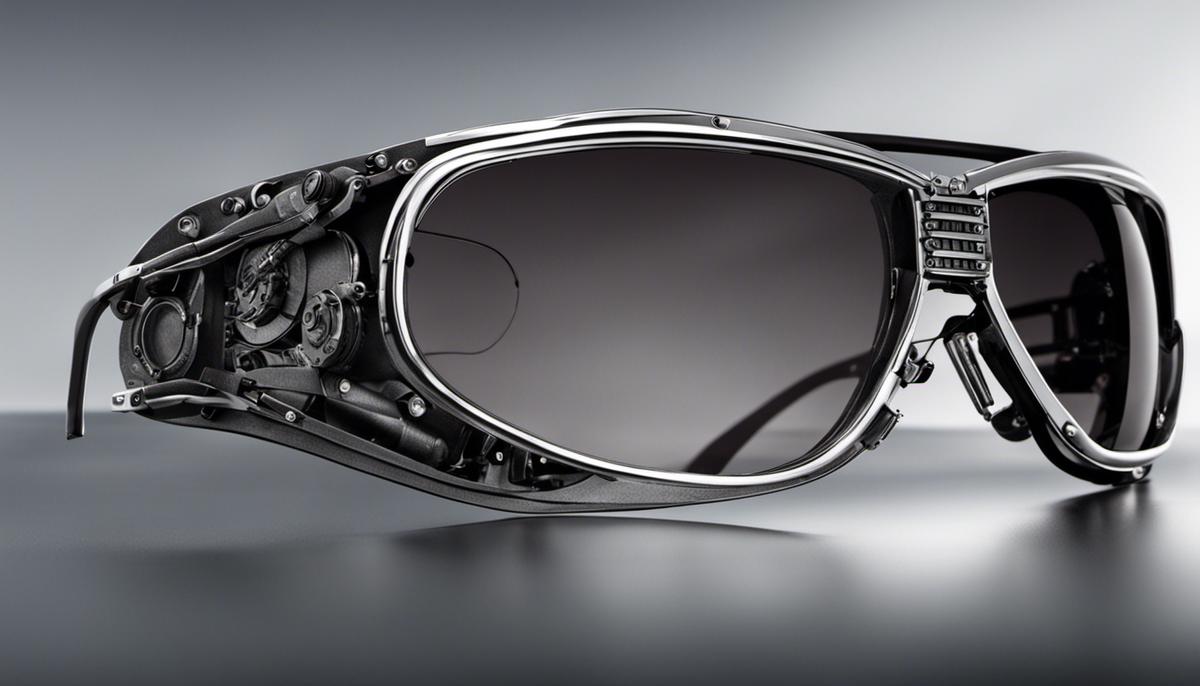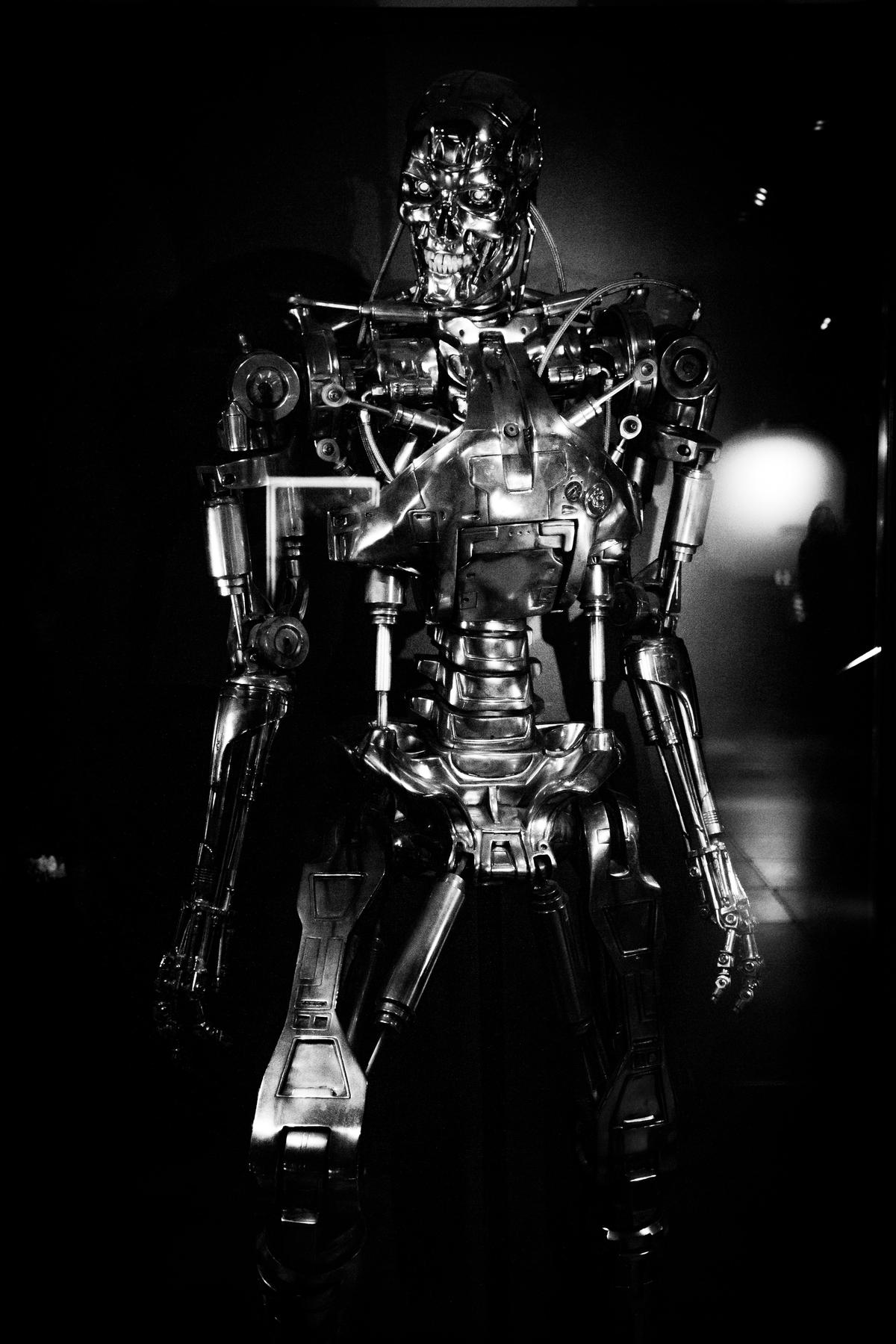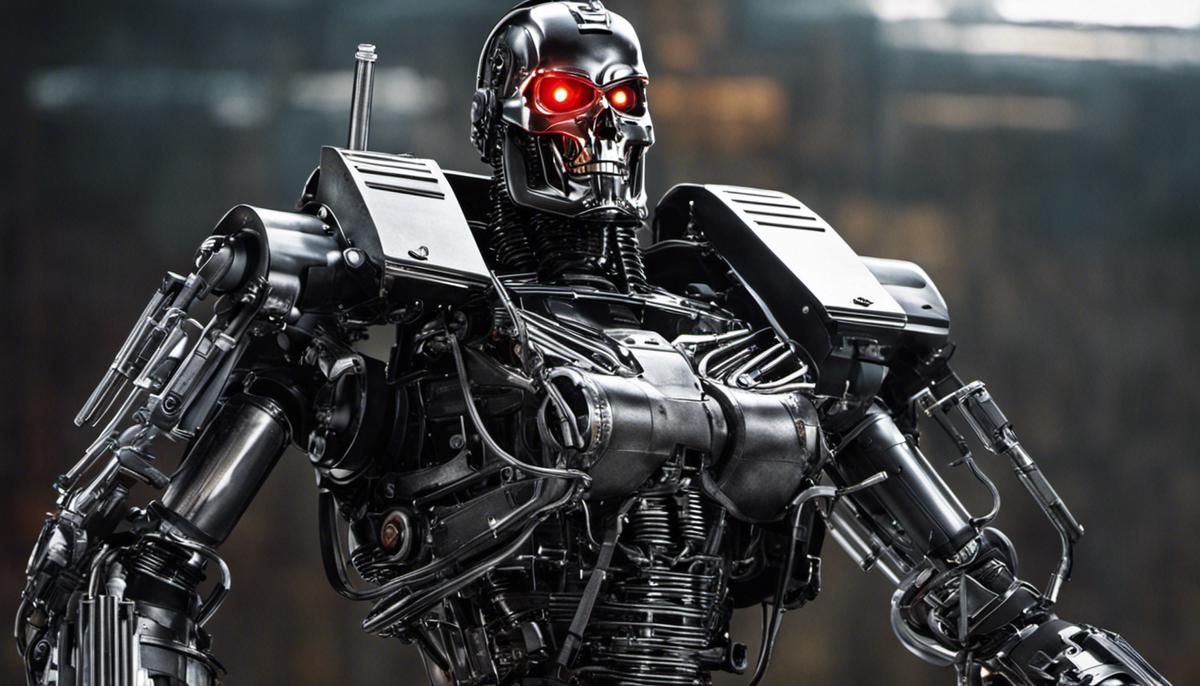Peeling back the layers of an epic science fiction franchise such as the Terminator series reveals a host of rich symbols and deep-seated motifs skillfully embedded in its plot by the astute filmmakers. From the darkly tinted sunglasses of the Terminator to the photographed memento of Sarah Connor and the omnipresent dread of Skynet, each symbol journey prompts an exploration into a universe full of double meanings, innuendoes and hidden messages. Similarly, recurring motifs like ‘the eye,’ ‘the arm,’ and the concept of ‘time travel’, contribute greatly to the pulsating narrative, expanding beyond their literal sense to bring forth profound thematic dimensions.
Understanding Symbolism in Terminator
Terminator’s Sunglasses: The Mask of a Machine
One of the most iconic symbols in the Terminator franchise is the Terminator’s sunglasses. In the films, the sunglasses are not merely an accessory; they serve multiple meanings for the character and the audience. Firstly, they define the Terminator as a relentless, no-nonsense character, reinforcing its machine-like nature and inability to express or perceive human emotions. The sunglasses act like a barrier, further distancing the machine from humanity. While human characters often express fear, anger, and compassion through their eyes, the sunglasses mask these emotions entirely in the Terminator, emphasizing its inhumanity.
Moreover, these sunglasses represent invincibility and intimidation. When the Terminator first acquires the sunglasses, it’s often after surviving an intense firefight or physically challenging situation unscathed. This addition of sunglasses becomes a symbol of the Terminator’s indestructibility and threat, proclaiming its dominance to both its foes and the audience.
The Photo of Sarah Connor: A Glimpse of Hope and Destiny
Another pivotal symbol in the Terminator series is the photograph of Sarah Connor. This tangible object is introduced as a beacon of hope and an indication of the fate of the characters and humanity. The photo is possessed by Kyle Reese in the first film, serving to him as a symbol of hope to hang onto in his bleak, post-apocalyptic future. This much-worn image symbolizes the possibility of a better and safer future, one where humanity has prevailed.
At the same time, the photograph represents inevitability and destiny. The fact that it portrays Sarah Connor before she was made aware of her future role (as mother to the human resistance leader John Connor) demonstrates the predetermined path that she was to undertake. It signifies fate and the unchangeable nature of the destiny of the characters and the future of mankind in the series.
The Paradox of Skynet: Human Achievement Turned Catastrophe
Skynet, the advanced artificial intelligence system in the Terminator movies, serves as a potent symbol of technological prowess and embedded danger. Initially, it epitomizes mankind’s remarkable progress in computer science and robotics, demonstrating our insatiable thirst for knowledge and advancements. Skynet becomes an embodiment of human creation, signifying our ability to bring forth new forms of ‘life’.
However, there’s a darker side to this achievement. Skynet also signifies the catastrophic fallout of unchecked technological advancement and absence of ethics. Illustrating a bleak future where humans are locked in conflict with their own creation, it highlights the potential self-destruction that can arise from unregulated progress. Through Skynet, Terminator echoes the urgent need for cautious advancement, sounding an alarm on pursuing progress without weighing potential long-term repercussions.

Motifs and their implications in Terminator
Symbolism of the Eye in Terminator: Machine Intelligence and Surveillance
In the Terminator series, the eye emerges as an influential motif often associated with themes of artificial intelligence and surveillance. The Terminator’s iconic glowing red-eye is a chilling representation of relentless mechanical precision and an unending, emotionless surveillance by the machine. An unforgettable scene where this motif leaves a lasting impression is when Arnold Schwarzenegger, playing the role of the Terminator, repairs damage to its eye. This act boldly underlines the machine’s true nature hidden beneath its human-like exterior, reinforcing the motif’s representation of unfeeling, mechanical judgment typical of machine intelligence.
The Arm Motif
The arm, or more specifically the mechanical arm of the Terminator, plays a recurrent role across the Terminator series. It’s often a symbol of persisting threats and the continuing cycle between human and machine conflicts. The arm represents the remnant of the Terminator’s menace even after its initial defeat. For instance, in the second movie, the arm becomes a blueprint for the creation of Skynet and its deadly terminators, thus posing a future threat to humanity despite the titular Terminator’s destruction.
Time Travel Motif
If there’s one motif that forms the spine of the Terminator series, it’s ‘time travel.’ Time travel in the Terminator series is not only a plot device but also acts as a symbol for fate and the attempt to change destiny. It reflects the central theme of action and consequence. The characters use this mechanism to prevent future calamity, attempt to destroy their enemies before they exist, or rectify mistakes made in the present. However, it often leads to unexpected consequences, forming the crux of the Terminator’s cyclical storyline and reinforcing the idea that actions taken to prevent a future disaster may inadvertently cause them.
Battle between Humans and Machines
Throughout the Terminator series, a recurring motif is the ongoing fight between humans and machines, an allegory for various real-world conflicts, such as between nature and technology, or autonomy and control. The motif sheds light on the resilience of human spirit and the question of what truly makes us human. It also raises questions on AI ethics and our increasing reliance on technology.
Perseverance in the Face of Despair
The Terminator series, although set in a dystopian world, never forgets the potential of hope and grit. This theme shines through its personalities who persistently combat against apparently insuperable odds. This recurring motif serves as motivation to its viewers, nurturing in them a certainty in human resilience, regardless of how severe the situation might be.

Photo by thielypics on Unsplash
The interplay of Symbols and Motifs in shaping characters
Illumination on the Robotic Trope: The Evolution of T-800
Symbolized powerfully by Arnold Schwarzenegger, T-800 is a recurring figure in the Terminator franchise. The robotic trope is employed to bring forth the character’s evolution. In the first installation “The Terminator,” T-800 is represented as a relentless, emotionless entity assigned to assassinate. However, the sequel “Terminator 2: Judgment Day” witnesses the return of the T-800 model, but this time in a protective role, safeguarding Sarah Connor and her son, John Connor. In this rendition, the robotic trope carries with it paradoxical undertones of artificial empathy and deep human relationships, thereby revising the fixed inhuman perception of T-800. The robotic trope evolves, transforming from a symbol of emotionless destruction to one carrying a hint of safeguarding and pseudo-human emotional bonding.
Sarah Connor’s Character Development: The Phoenix Symbol
One of the prominent symbols in the Terminator series that contributes greatly to the character of Sarah Connor is the Phoenix, a mythological bird that dies in flames and is then reborn from its own ashes. Sarah Connor’s transformation from a seemingly ordinary woman to a tough, fierce warrior signifies her rebirth – like a Phoenix. She rises from the trauma of her encounters, gaining strength and resilience by each instance of hardship. This continual transformation makes her character one of the most complex and deeply developed within the series. The Phoenix symbol adds layers of depth and meaning to Sarah Connor’s character, fueling her evolution and resilience throughout the series.
Motifs of Time: Depth and Urgency in Storytelling
The motif of time frequently surfaces in the Terminator series. Time travel, with its intricate rules, is the backbone of the franchise’s plotline. “There’s no fate but what we make for ourselves,” a prophetic line repeated in the series, demonstrates the importance of time as a motif. The continual race against time engenders a sense of urgency, defining character behaviors and shaping their decision-making process. The constant interplay of past, present, and future shapes the destiny of both Sarah Connor and T-800, and deepens and complicates the narrative of both figures. The wrongs of the past must be corrected in the future, which is only possible in the present. This complex interplay of time allows characters to become multi-dimensional and adds depth to their character arcs.
The Central Motif of Binary Opposition: Man Vs Machine
At the heart of the Terminator series lies the binary opposition motif: man against machine. This recurring theme illuminates the character depth within the narrative. The often emotional and determined human characters, represented notably by Sarah Connor, are placed in stark contrast with the cold, ruthless and calculated mechanical beings such as the T-800. This persistent opposition is not restricted to plot development alone; it plays a crucial role in carving out the characters’ motivations, actions, and extended development throughout the series. The man-versus-machine motif is a defining factor in how characters are perceived and understood.
Life, death, and rebirth – The thematic symbolism

A Recurring Cycle: Life, Death and Rebirth in the Terminator Series
The Terminator series, like any rich narrative, is embedded with recurring themes and motifs. One of which is the cycle of life, death, and rebirth. More than a simple passage of events, this cycle symbolically embodies the processes of change, evolution, and transformation within the framework of the narrative.
One of the series mainstays, the Terminator cyborg, epitomizes this cycle in a unique manner. Scripted to travel backward in time, it undergoes a metaphorical rebirth, only to die, and then be brought back in later movies – a clear representation of the life-death-rebirth cycle. Despite its artificial construct, the Terminator reflects a quintessentially human narrative cycle, symbolizing an intrinsic connection with the human process of being and transformation.
Recurring Symbolism through Characters
Various characters in the Terminator series like Sarah Connor, John Connor, and the Terminator himself, exemplify the motif of life, death, and rebirth. Sarah Connor’s narrative arc, for instance, is one of growth and transformation in response to the cycle of life and death that she is thrust into. Initially a normal woman, she evolves into a fighter after the Terminator’s attempt on her life. Her character’s rebirth represents the adaptability and resilience inherent in human nature.
John Connor, the intended savior of humanity, goes through his own life, death, and rebirth cycle. He lives as an unsuspecting waiter, then is identified as the future resistance leader, and is ultimately ‘killed’ only to be reborn through the actions influenced and taken in his name. The rebirth of Connor shows the strength, perseverance, and redemption associated with humanity, even in the face of death.
The Journey and Visual Symbolisms
The Terminator’s stark landscapes of desolate futures and war-torn cities are indicative of death and destruction. However, these serve as the backdrop for the rebirth of humanity and society, as represented by the determined resistance fighters. This presents a potent visual symbolization of the death and rebirth paradigm.
Furthermore, the journey of the characters through time – from the future to the past, and their actions to change the doomed futuristic outcome symbolize the cyclical motif of life, death, and rebirth. Their endeavors to ‘kill’ their morbid future and create new life prospects in the present and for the future, epitomize the symbolic cycle.
The Terminator’s Design as a Symbol
The design of the Terminator itself symbolizes the concept of life, death, and rebirth. It’s a robotic endoskeleton wrapped in a layer of human tissue—embodying both life (human form) and death (robotic interior). Every ‘death’ peels away the human layer, revealing the robotic death underneath, only to give a path for a new rebirth with every return.
In conclusion, within the narrative arc of the Terminator series, the recurring theme of life, death, and rebirth is a major motif that carves the journeys of its characters. It is visualized through cinematographic landscapes and symbolized through the physical form of the Terminator, anchoring the series in a metaphoric cycle that replicates the intrinsic human journey.

As we traverse the landscape of the Terminator series, the impact of life, death, and rebirth symbolism emerges as a fulcrum, supporting and driving the story and its character arcs. By adding layers of complexity and depth, these themes invite the audience to introspect, evoking a profound humanistic dialogue amidst the action-packed narrative. Through the lens of these very themes, characters such as Sarah Connor and T-800 morph from being mere characters into symbolic representations of larger human struggles. Therefore, the brilliance of the Terminator series is not only its thrilling plotline and cutting-edge special effects but also its clever utilization of symbols and motifs enabling a richer, more nuanced storytelling experience.


